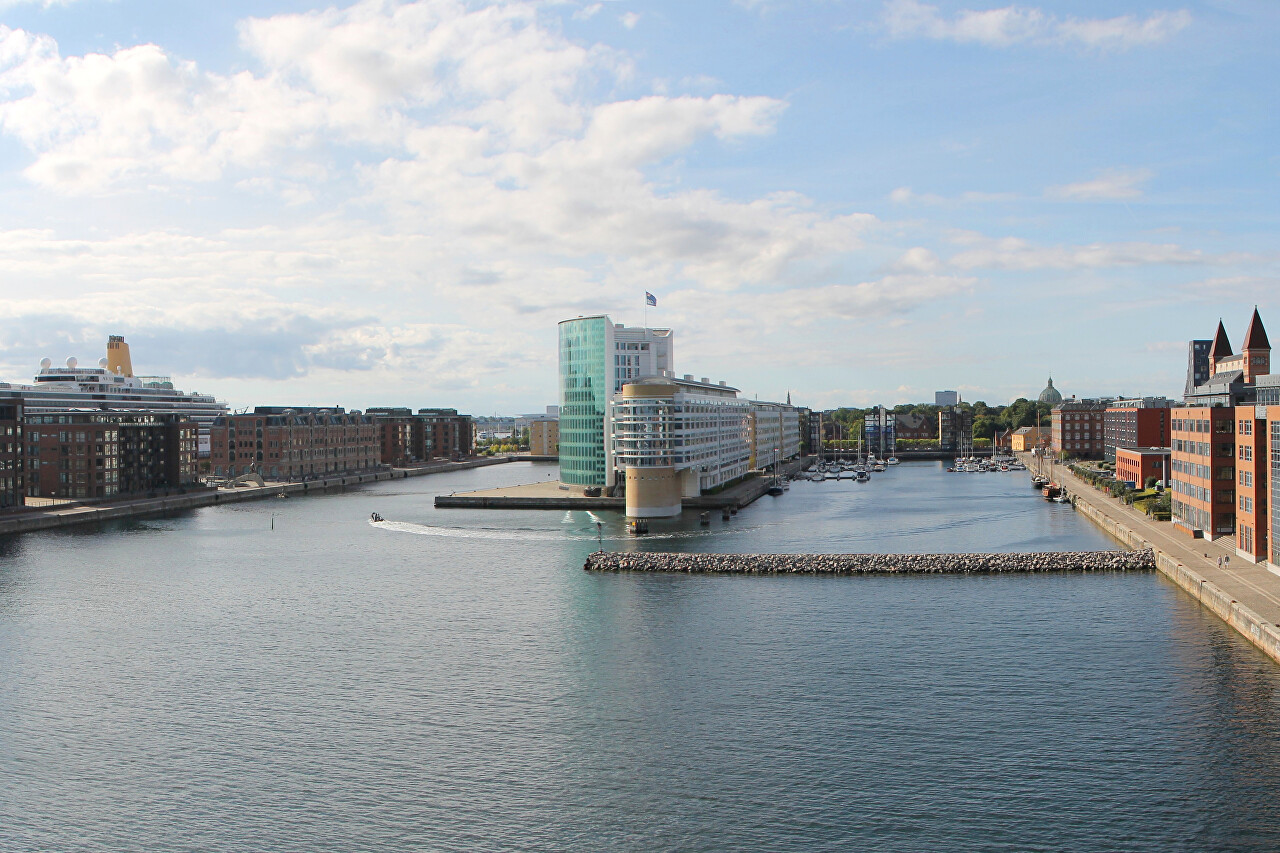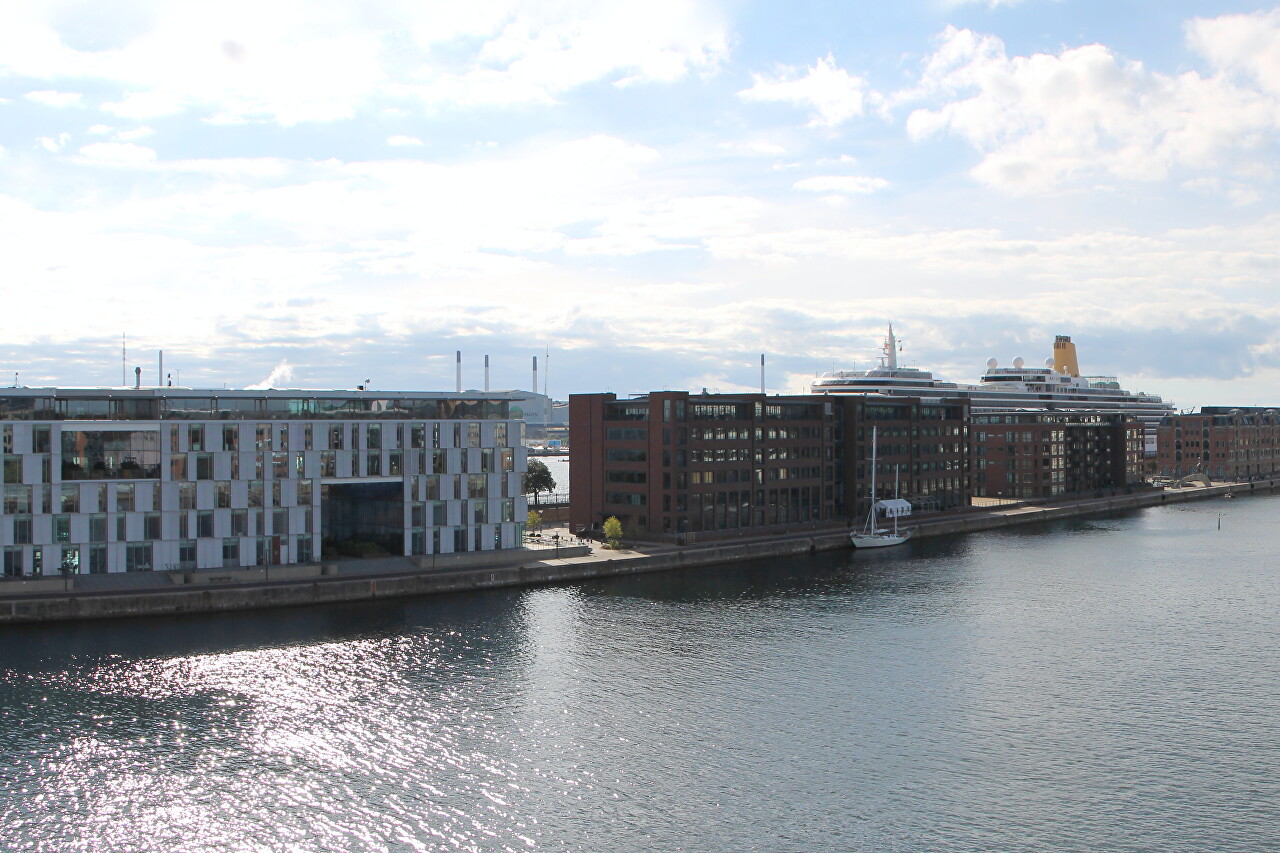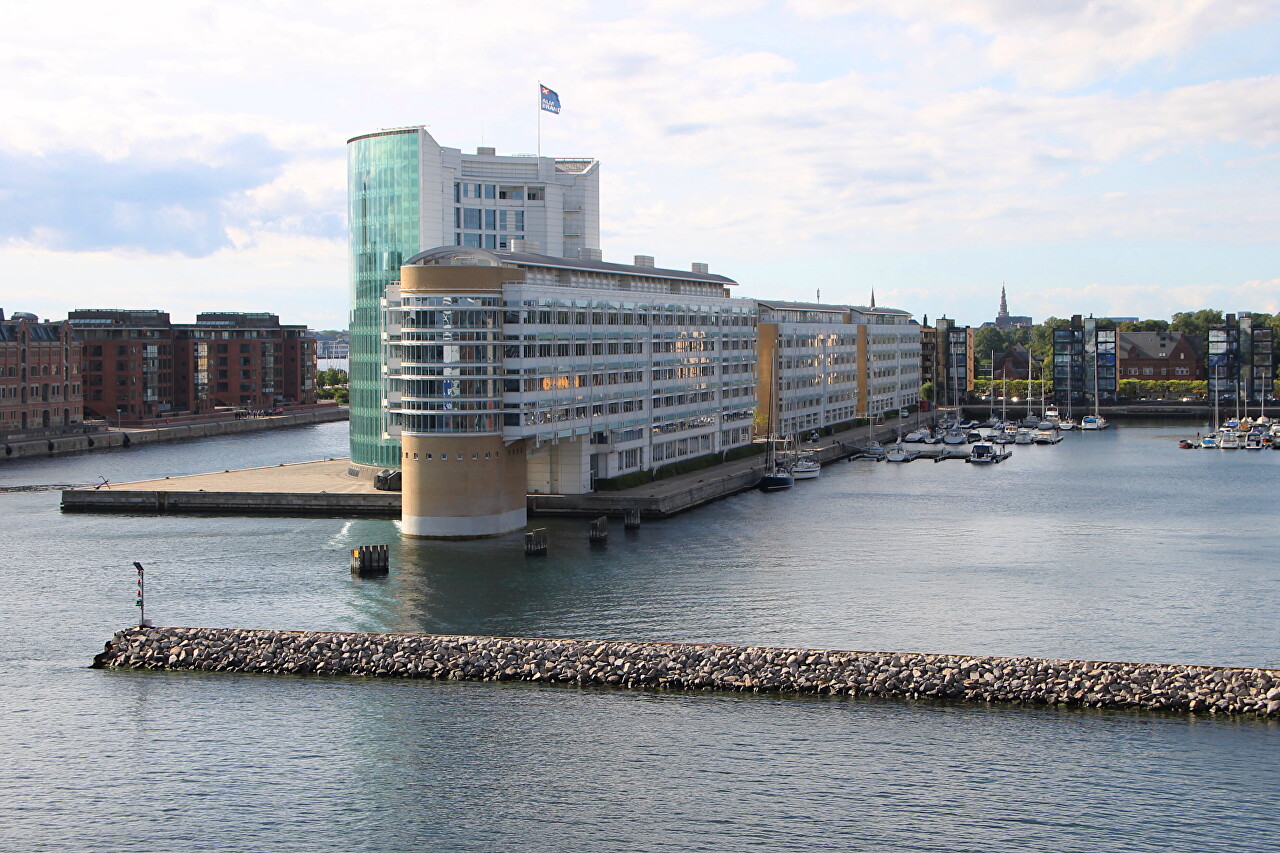South Harbor, Copenhagen
Our ferry enters the South Harbor (Søndre Frihavn). In the middle of the 19th century, as a result of the growth of Copenhagen and the industrial Revolution, the Inner Harbor (Inderhavnen) became too small for the increased volume of maritime traffic. In 1862, the city authorities, who had long discussed the idea of creating a free (duty-free) port in Copenhagen, decided to build a new harbor north of the Castellet fortress, capable of receiving modern ships with a large draft. The decision remained on paper for almost 30 years, and the new port would have remained in the dreams of officials if Germany had not begun construction of the Kiel Canal in 1887, which threatened to redirect maritime traffic to German ports in the Baltic. In 1891, construction finally began, and, just three years later, on November 9, 1894, the port was opened. By 1931, the port was expanded to cover an area of 82.5 hectares, with a total length of 4,770 meters of berths with depths from 7.5 to 9 meters. The Freehaven was divided into the eastern (Østbassin) and western (Vestbassin) basins by the long wooden pier Midtermolen (Midtermolen, "middle pier"). One-story warehouses stretched along the entire territory, and at the northern tip, a huge Renaissance-style warehouse with an 11-story lighthouse tower was erected (photo from http://en.wikipedia.org/wiki/Midtermolen ). Unfortunately, this remarkable monument of industrial architecture was destroyed by fire in 1969. In 1994, a modern building of the East Asian Company (Det Østasiatiske Kompagni, or ØK) was built in its place.
..

..

..

..

..
